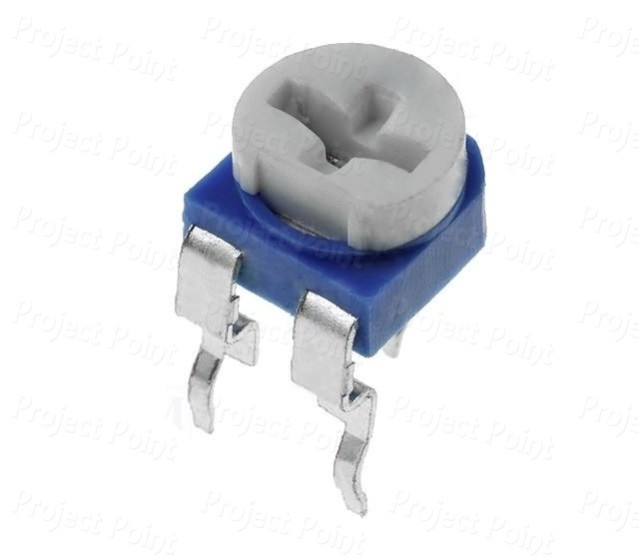








10K POTENTIOMETER
A 10K Pot refers to a 10 kilohm potentiometer. A potentiometer (often abbreviated as "pot") is a type of variable resistor that allows you to adjust its resistance manually. In this case, the 10K refers to the total resistance range of the potentiometer, which is 10,000 ohms (10 kΩ).
₹ 6 ₹10
10
Add FAQ
A 10K Pot refers to a 10 kilohm potentiometer. A potentiometer (often abbreviated as "pot") is a type of variable resistor that allows you to adjust its resistance manually. In this case, the 10K refers to the total resistance range of the potentiometer, which is 10,000 ohms (10 kΩ).
What is a Potentiometer?
A potentiometer is a three-terminal device used to adjust the level of resistance in a circuit. It is most commonly used for voltage division, but it can also serve as an adjustable current limiter or a user input for various electronic devices (such as volume controls on audio equipment).
Components of a Potentiometer:
- Two fixed terminals: These are the terminals at either end of the potentiometer.
- One adjustable wiper terminal: This terminal slides across the resistive material as you rotate or slide the potentiometer, changing the resistance between the wiper and each fixed terminal.
Types of Potentiometers:
- Rotary Potentiometer: The most common type, where you turn a knob to adjust the resistance.
- Slide Potentiometer: Adjusted by sliding a lever across a track.
Uses of a 10K Potentiometer:
- Volume Control: Commonly used in audio devices like radios, amplifiers, and mixers to adjust the volume level.
- Brightness Control: Used to adjust the brightness of LED lights or displays.
- Adjusting Sensor Sensitivity: In circuits where the potentiometer adjusts the sensitivity of sensors, such as temperature or light sensors.
- Tuning Circuits: In some RF (Radio Frequency) circuits, a 10K potentiometer may be used to tune the circuit or frequency.
- Variable Resistor Applications: It can be used in applications where a resistance needs to be varied, such as in analog signal processing or voltage regulation.
Specifications of a 10K Potentiometer:
- Resistance Value: 10KΩ (10,000 ohms) which means the total resistance between the two fixed terminals is 10,000 ohms.
- Tolerance: Typically, potentiometers have a tolerance that indicates how accurately they can achieve their rated resistance. For example, a 10K potentiometer with a ±10% tolerance might actually measure anywhere between 9KΩ and 11KΩ.
- Power Rating: Potentiometers have a maximum power rating that indicates how much power they can dissipate without getting damaged. This is typically low in potentiometers, often around 0.1W to 1W depending on the model.
How it Works:
- When you rotate or slide the potentiometer’s knob or lever, the wiper moves across the resistive material inside, varying the resistance between the wiper and the fixed terminals. By doing this, you can control the amount of current flowing through the circuit or adjust the voltage at a given point.
If you're using a 10K potentiometer in a project, it's likely that you're controlling some aspect of the circuit, like adjusting the signal strength or brightness, or even calibrating a sensor. Let me know if you need help with a specific circuit design or application!

0 Reviews For this Product












2.jpeg&width=225&quality=80)
2.jpeg&width=225&quality=80)
.jpeg&width=225&quality=80)

